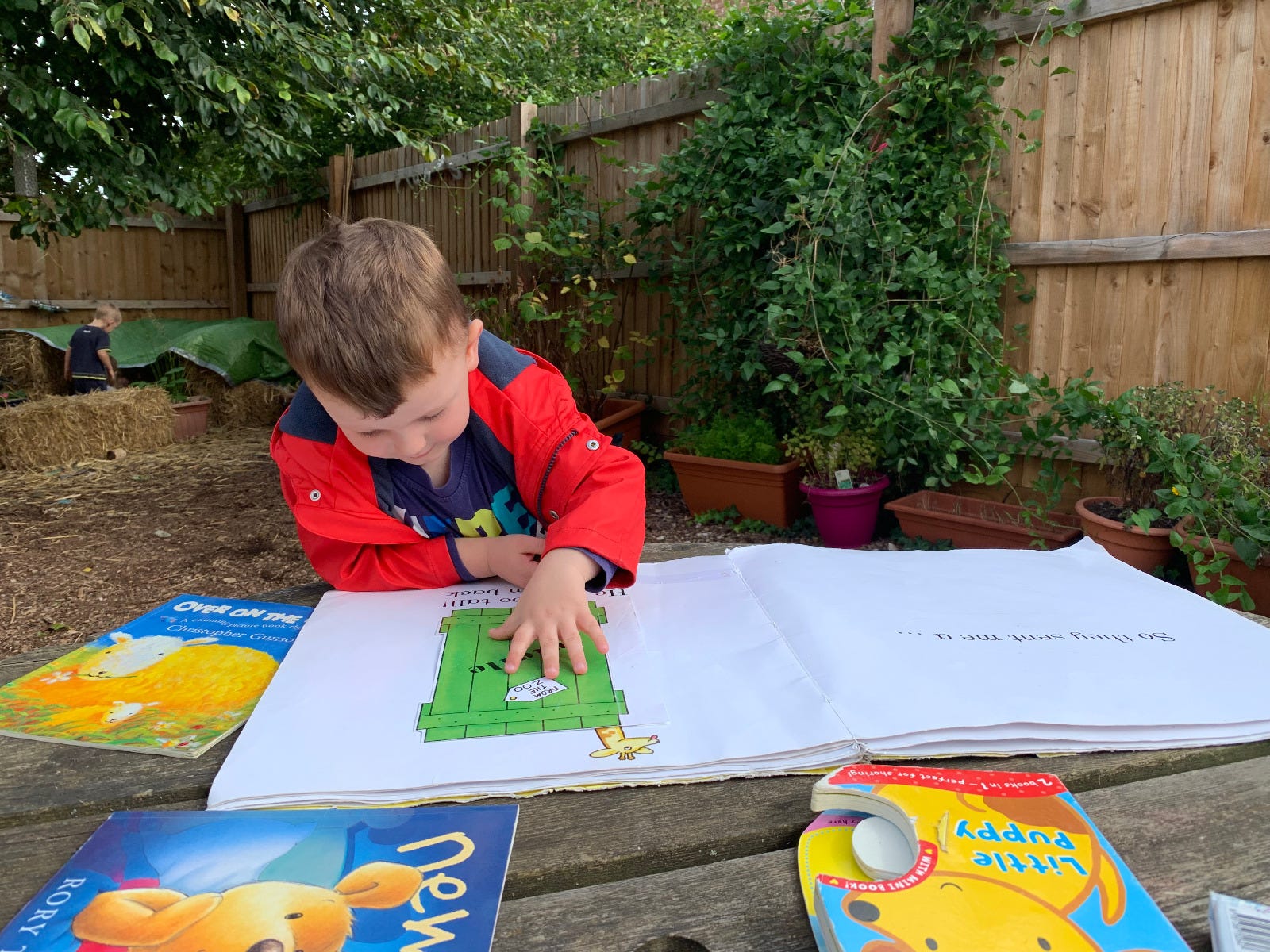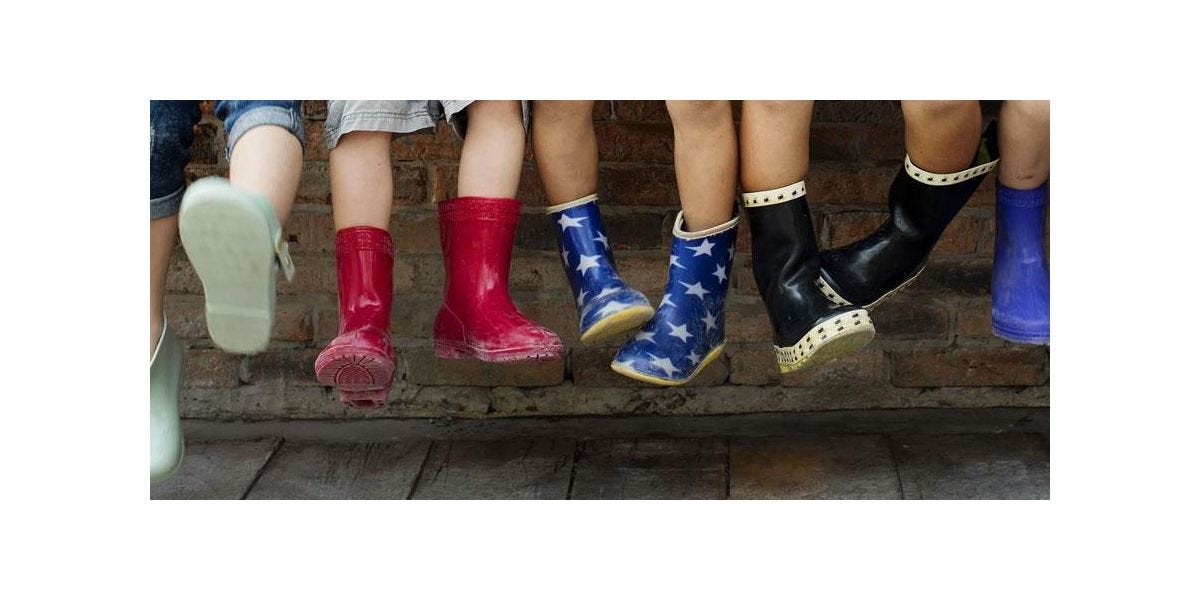
The best classroom and the richest cupboard are roofed only by the sky.'
Margaret McMillan.
In this blog post, we'll be thinking about the outdoor environment and its capacity for promoting learning and development within the Early Years Foundation Stage (EYFS). The outside is a completely different entity from the indoor environment in every respect. It should not be a replication of the indoors as it can be a powerful learning space in its own right. The ever-changing environment opens up a wealth of possibilities for children and adults to experience, explore and investigate together. It's less restricted than the four walls which enclose indoor play so the power of the outdoor environment is huge!
A Space to 'Be'
Being outside should be a fun, happy time when children can experience a sense of freedom, somewhere they can use their senses to connect with nature. It is an organic space where learning and curiosity can evolve through nature - the weather, the seasons, smells and sounds. In the hustle and bustle of daily life, children need to experience times of calm where they can be quiet and still. Watch the clouds rolling by, listen to the pitter-patter of the rain, take in the variety of colours around them. Any outdoor space should have an area for quietness, whether children choose to take a break from the noise or overstimulation, look at a book or just chat quietly with friends. It's well documented that time outdoors has a positive impact on wellbeing, including friendships, confidence and self-esteem.
We're Free!
For some children, hearing the words "Who wants to go outside?" can be the highlight of their day…a cue for fun and excitement! Ideally, children should be able to access their wellies and coats independently so that when it comes to free-flow or playtime, they can get ready themselves without having to wait and rely on an adult.
Children should be free to embrace the freedom of the outdoor environment with large spaces to run and just burn off energy. Let them make noise and mess (to a degree!) away from the constraints of the indoors. Having the freedom to move in the outdoors helps develop physical skills so time for climbing, balancing, stretching, digging and mark making are important. These experiences improve hand-eye coordination, muscle control, spatial awareness and gross motor skills help get the body ready for writing.
The Role of the Adult
The adult has power in the outdoor environment, but this must be held lightly and respectfully. We are responsible for the layout, the planning, risk-taking, time spent outdoors and the experiences of the children. We can bring the environment to life so it's a huge undertaking! To provide a suitably challenging, playful and happy outdoor learning environment, it is a priority that adults understand and embrace the outdoors as a rich learning environment. They should have the ability to extend play, interests and experiences to enhance learning and enjoyment. By tuning in to the children and the way they use the space, the adults can reflect on its success and learning potential. Are there areas not being used to their full potential? Why? Just thinking about things from a child's perspective, enables us to become more tuned into their experiences and needs.
The observations made by adults in the outdoor environment should link to the planning but also offer opportunities to reflect on provision:
What have children particularly enjoyed?
- How can this be extended?
- Are there resources linked to interests?
- What skills do you want children to develop and how does your environment allow for this?
- What experiences can you plan and what organic experiences can you embrace?
- Think about the areas and layout - is there space to make a mess? Are there areas where flowers or vegetables can be grown? Are there different textures underfoot - grass, gravel, bark etc?
- Is it accessible for all?
If we want children to embrace the outdoors, we need to love it ourselves. Enthused, playful adults can inspire motivated children who are engaged and curious in their outdoor play.
Resources
A well-resourced learning environment outdoors is just as important as indoors. However, this doesn't just mean taking toys from inside and putting them outside. The outdoors should offer unique experiences but the resources do not have to be expensive. In fact, some of the most useful resources are absolutely free - you just need to go and find them:
- Sticks
- Leaves
- Shells
- Cones
- Conkers
- Acorns
Loose parts are an integral element of inspiring outdoor play experiences. This type of play is flexible and open-ended so children can join in without fear of getting it wrong. Children can collaborate to construct, create, imagine and learn. Some examples of loose parts for the outdoors include:
- Tyres
- crates
- tarpaulins
- boxes
- blocks
- crates
- sand
- water
- mud
- planks
- cable reels
Mud kitchens are particularly popular at present but although expensive models are on the market, you can quite easily create one yourself for a very minimal outlay. Pallets are very useful for this so it’s worth befriending your local builder’s merchants. Asking parents to donate items for the mud kitchen develops partnerships and learning, especially if you document why you need saucepans, colanders, scales, different sized spoons and whisks.
There are some essentials that every outdoor space should have to enhance learning and develop a sense of awe and wonder and to inspire learning:
- magnifying glasses
- binoculars
- clipboards
- bug viewers
- bubbles
- paintbrushes
- squirty bottles
- watering cans
- hoops
- chalks
Finally...
Safety must be a priority. Thorough daily risk assessments help ensure your outdoor space is safe from hazards with secure boundaries. Also, think about yourself when outdoors...are you inspired to play and support learning if you're wet and cold? Encourage parents to provide their children with warm, waterproof coats and wellies. Perhaps you could think about waterproof trousers for, especially active children. Let's not forget the hot, sunny days no matter how few and far between they seem. Children must always be protected from the sun’s harmful rays so hats and sun cream are musts!
Finally, have fun! We are the role models so let’s show children that the outdoors is an exciting space to play.

